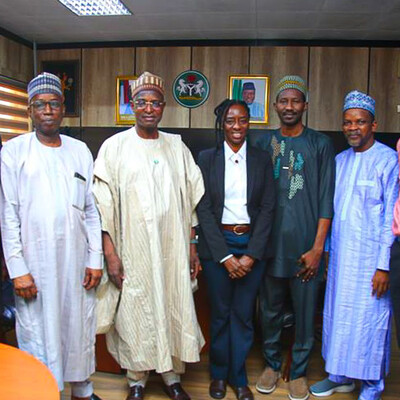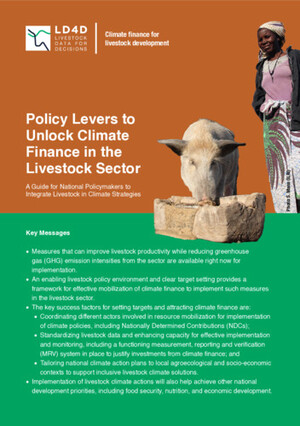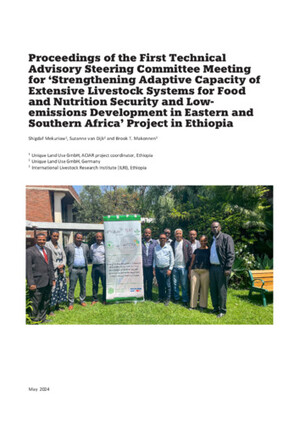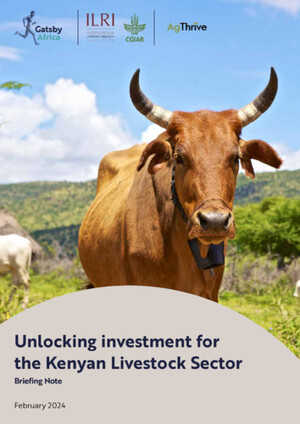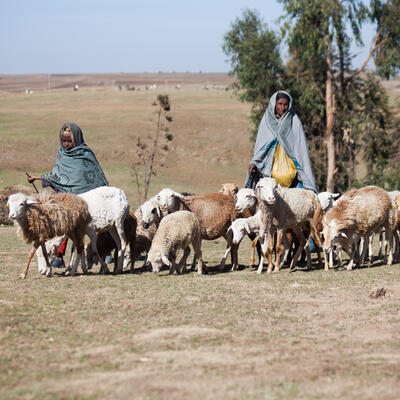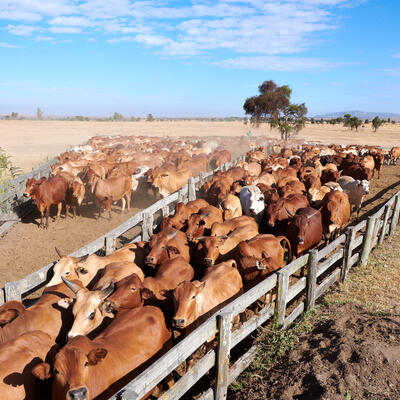
Fauci, Doudna and Doherty offer 'pandemic science guide' at the Nobel Prize Summit last week
The first Nobel Prize Summit, held virtually on 26–28 Apr 2021, brought together Nobel Prize laureates, scientists, policymakers and business and youth leaders to explore what could be achieved in this decade to put the world on a path to a more sustainable, more prosperous future for all of humanity.
This star-studded three-day event featured the likes of Swedish environmentalist of ‘planetary boundaries’ fame Johan Rockstrom; American politician, environmentalist and Nobel laureate (Peace, 2007) Al Gore; American biodiversity and conservation biologist Thomas Lovejoy; American experimental physicist and Nobel laureate (Physics, 1997) Steven Chu; and His Holiness the 14th Dalai Lama of Tibet.

On the second, science, day of the summit, a particularly pithy panel discussion was held on ‘A pandemic guide to solving problems with science’. This session was moderated by Laurie Garrett, an American Pulitzer Prize-winning health journalist, popular science author (The Coming Plague, 1995; Betrayal of Trust, 2000; I Heard the Sirens Scream, 2011) and policy analyst in global infectious diseases (e.g. HIV/AIDS, Ebola, SARS, bird flu, COVID-19).
Garrett interviewed three of the world’s most eminent, credible and influential science leaders:
> Anthony Fauci—American immune-mediated and infectious disease expert; director of the US National Institute of Allergy and Infectious Diseases at the National Institutes of Health for the last 37 years (since 1984); advisor of seven US presidents (e.g. on HIV/AIDS, West Nile virus, Zika); and the 32nd most-cited living researcher—is a household name now in the United States due to his leadership role in that country's battle against COVID-19.
> Jennifer Doudna—American biochemist and recent Nobel Prize laureate (Chemistry, 2020) for her pathbreaking CRISPR gene-editing research at the University of California, Berkeley—is co-discover of CRISPER Cas9, the ‘molecular scissors’ used by bacteria to respond to invading viruses and other pathogens that is now employed by geneticists and medical researchers to precisely, efficiently and cheaply edit parts of the genome of organisms (by removing, adding or altering sections of DNA sequences).
> Peter Doherty—Australian immunologist and Nobel Prize laureate (Physiology or Medicine,1996) for his discovery of the immune system’s ‘killer t-cells’ and patron of both the Doherty Institute at the University of Melbourne and the International Livestock Research Institute (ILRI), in Nairobi, Kenya, where he had once served on the board of trustees—is a key advisor on Australia’s COVID response.
As one might have expected, the discussion among these four highly articulate as well as influential and illustrious people was fascinating and, somewhat unexpectedly (at least for me), very much down-to-earth.
Laurie Garrett: As of today, roughly 14.5 million cases of COVID-19 have been recorded in the world since December 2019, with more than three million deaths. This is certainly an undercount, but at least it’s a bench point.
Larry Summers, the former treasury secretary of the United States, has dubbed this the ’15-trillion-dollar virus’ because of the economic consequences of this pandemic.
Here in the United States, the richest country in the world, and supposedly the best pandemic-prepared country in the world, we have had a devastating outbreak, with about a third of all those cases and deaths. We have also seen huge surges across Europe multiple times and now both Brazil and India are experiencing out-of-control surges of this pandemic. We are now in our fourth international surge.
How did the Unites States end up having the worst epidemic in the world?
Anthony Fauci: I don’t think there’s a simple answer to that. It’s related to lots of things that went wrong. Early on, our testing system just did not work and we did not quickly translate into the private sector, which is always better than relying just on the CDC [Centers for Disease Control]. That was the first mistake.
I also think we were fighting an epidemic in the most divisive time that I’ve ever experienced in all of my years in public health. It was extraordinary that there was initial denial of the pandemic, and then public health messages that were garbled in many respects. We were getting mixed messages from different people. While everyone in the world, with few exceptions, got hit really badly, we did worse than we should have done due to this extraordinary divisiveness.
The common enemy is the virus—and yet we were fighting each other. We were giving public health guidelines—'wear a mask, keep physical distance, avoid crowded settings'—at the same time as we were giving messages to just 'forget about those things'.
And then you had a situation in the United States different than any other country. You have a federal government and you have 50 states that can actually do whatever they want to do. So how can you possibly fight a pandemic when you have some state governors saying ‘No problem; do whatever you want’ and you have other state governors saying, ‘Let’s be very, very careful about adhering to public health measures’?
The virus doesn’t know the difference between Louisiana and Mississippi or between Maine and Vermont. But we were acting as if we could act independently with a virus that spread everywhere, which just doesn’t make any sense.
Garrett: And yet despite all of that—despite the ‘political barricades’ if you will—science delivered in record time. In 11 months we ended up with two very promising vaccines, and in a matter of 13 months we have more than a dozen vaccines, building on what we learned from HIV, from Ebola . . .
How did we achieve such great success in such a short amount of time?
Fauci: I believe I described it pretty well in a 750-word editorial in Science a week and a half ago [9 Apr 2021], where I said The story behind COVID-19 vaccines is exactly what Peter [Doherty] and Jennifer [Doudna] know. It was the decades of investment in biomedical research that got us there.
The [vaccine] platform technology work—people think that we thought of that in January. But it was people working on the structural base for the immunogenicity design of the pre-fusion spike protein that made mutations that stabilized it to be a competent immunogen. That didn’t happen in January! That happened ten years before. I think if ever we’re going to make an argument to the general public about the value of investment, this should be Exhibit Number One.
Garrett: Despite that great achievement, we do need to show a little humility as a species, don’t we? Every day we’re learning something new. We learning something about the way this virus attacks the human immune system, and how the immune system itself then self-attacks the body. We’re still trying to figure out which of the terrible symptoms, and even cause of death, people are experiencing are a result of their own immune system gone awry versus a direct outcome from the virus.
And then we have all these variants coming along that in some cases are viral mutations to escape the immune response. It’s not clear to me that we even know what the core elements are of immunity. What actually represents a successful immune response?
Peter, as someone who has been in the immunology game pretty much your whole life, when you look at where we stand right now vis-a-vis this new enemy—SARS-CoV-2—and what we know and don’t know about our own immune defences, what’s your assessment?
Peter Doherty: That’s pretty right. We know that the vaccines are working incredibly well, that antibodies are a major protective mechanism in these virus infections. So that’’s clear. And in many cases, it looks as though the vaccines may give you much better protection than being infected. And we do know, I think, that the virus can—not always, but can—be messing with our immune system in various ways. So, as Tony said, we’ve had this extraordinary speed in getting great vaccines out and the United States deserves a great deal of credit for that.
A lot of things went wrong, but that [vaccine development] didn’t go wrong.
The fact that the vaccines are working at a very high level of effectiveness—much better than, say, the influenza vaccine—is truly extraordinary. But the details of what’s actually going on within us have to some extent been set aside as everyone has rushed to try to counter this disease. They’ve been trying both to understand what’s happening and to get better treatments, better approaches to handling it. As a consequence, a lot of that really in-depth study has probably not been driven as hard as we might have driven it.
A lot of the laboratory-type experimental work, for instance, certainly hasn’t been done yet as we've focused on getting the diagnostics right, getting them out to people, and getting people protected.
So there’s a lot of work to be done over the long term on really understanding this disease in depth, rather than just reacting to what it’s doing to us.
The disease is complex. It’s not only killing people, it’s giving people these long-term effects, these long-haul effects, that aren’t really age related. As we know, COVID-19 has mainly killed older people. But these long-haul effects can affect people of all ages. And nobody of any age should minimize the possible consequences of being infected with this virus. We have these chronic-fatigue-type syndromes, we certainly have heart and lung damage as a long-term consequence. So there is a great deal to be learned about this.
We are, whether we like it or not, part of an enormous global experiment.
What’s going to be really important, as we continue through this, is to look at every part of this from the economic, medical, social research perspectives and see what lessons we’ve learned and take those lessons on board.
As we all know, human beings are very good at reacting to a crisis situation; they’re not always that good about learning over the long term.
Garrett: Jennifer, I can’t think of any field of science in my lifetime that has exploded the way that CRISPR-Cas9 and all the other Cas’s. It’s just been extraordinary. We went from viewing these repetitive sequences of our DNA in the genome as ‘garbage DNA’, ‘trash’, ‘just a lot of junk’ (some literally called it ‘junk DNA’) to now recognizing that there are these amazing and precise molecular scissors that bacteria have been using forever, and thanks to you and Emmanuelle [Charpentier], we finally discovered this trick being used by a microbe.
I think with that discovery comes public expectation. And Wall Street expectation. That somehow this new exploding field of CRISPR science will yield great results that we can count on, e.g. being able to identify any mystery disease just like that. That hasn’t happened.
So how do you temper that extraordinary excitement and enthusiasm with the reality of the scientific process and what it’s going to take to get us to go the final mile to realizing the potential, especially in the context of disease epidemics.
Jennifer Doudna: Let’s start with the fact that CRISPR is an ancient bacterial immune system. So I think there’s a very interesting connection to the current pandemic. Scientists began studying it 10 to 15 years ago because of fundamental curiosity about how this system operated, how it compares with other types of immune systems—it’s been around.a lot longer than human immune system, for example.
It’s a great example of—getting back to Dr Fauci’s comment that a lot of advances in science build on decades of curiosity-driven experimentation by people who just have a passion for understanding Nature. That’s fundamentally the story of CRISPR.
With regard to the pandemic, I would push back a little on what you said. I would argue that not only has CRISPR taken off quickly as a research tool in laboratories around the world, but to me it’s quite extraordinary that in less than ten years since the original publication of how CRISPR could be used for genome editing, we’re already seeing the results of clinical trials for sickle cell disease. That’s really incredibly fast. It hasn’t been employed in a lot of other cases yet but I think we all see the potential of this to be truly transformative.
With regard to the current pandemic, it’s very interesting that here we have a bacterial immune system whose job in microbes is to detect viruses and destroy them.
Many folks have asked if we could use that immune system in the current pandemic either as a detection system or diagnostic tool and/or as an actual therapy, an anti-viral drug.
I think use of CRISPR as an anti-viral strategy is probably not going to happen in the current situation because it’s going to take too long to deliver it into every cell where it is required for therapy, but for diagnostics, absolutely, There is a lot of research going on right now both in academia and in companies suggesting that the CRISPR system will work in programmable ways to detect viral nucleic acid—DNA or RNA—that comes from viruses in real time, not requiring resource-heavy tests that take place in a laboratory but potentially allowing point-of-care at-home testing, ultimately.
I think that is where we’re going to see the real impact of CRISPR in the current pandemic—as a diagnostic tool.
Garrett: Can you imagine something equivalent to that Star Trek tricorder [a multifunction hand-held device in the Star Trek television series and movies that performs sensor environment scans, data recording and data analysis--the three functions of sensing, recording and computing] for detection of microbes and identification even of previously unknown microbes?
Doudna: Well, it’s a great question! I have some real Star Trekkies in my family so, believe me, we’ve debated this.
The CRISPR system is programmable. That’s how it works in bacteria. Bacteria program the CRISPR proteins to find specific viruses.
We imagine that we can use it in a diagnostic setting the same way.
You can imagine programming it to give you a readout about the presence of the SARS-CoV-2 virus, the virus that causes COVID-19, but also influenza, other coronaviruses, and potentially other types of infectious agents.
That would be really enabling, if we had ways to quickly surveil the population and give people information in real time about their health.
Garrett:
It’s been something of a Holy Grail as long as I can remember in infectious diseases and epidemics research—this search for a universal, instant platform for detecting pathogens and being able to identify them and determine something about their attributes and perhaps vulnerability.
Peter, I know that you are also very concerned also about climate change. And, in fact, this session is nested within a Nobel Summit that was initially called for within a context of the future of the planet vis-a-vis climate change. Look at the massive brush fires that devoured so much of Australia.
In fact, almost all news outlets were focused on Australia in December of 2019, as fires raged across one part of your giant island to the other, and not on Wuhan [China] , where a new tsunami was emerging in the form of what we now call COVID-19.
When you look at the sum total of threats posed by climate change, how do you see the connection between increased risk of pathogens and the changes in our ecologies vis-a-vid climate change.
Doherty: There are various interactions between infectious disease and climate change.
As the planet warms, it's getting too hot for various species that normally live on the tops of mountains while other species are moving up those mountains.
I think David Attenborough refers to this as ‘the stairway to extinction’.
The other thing of course is the catastrophic events that are becoming more frequent. The Australian bush fires certainly are an example of that. To me they look more severe than anything I can remember in my lifetime, and I’m now pretty old. We saw effects like the ground after the fires being so baked that they are not recovering. We saw people being evacuated from beaches—we’ve never done that before. The infectious disease threats related to climate change are obviously related to flooding, with the overwhelming of sewage systems. Then of course as the planet warms, mosquito-borne diseases are moving further away from the equator, and so forth.
While advanced countries handle these things pretty well, they become catastrophic in poorer countries.
Whether it’s COVID or climate change, it’s always the poor of the planet who are most severely affected.
So, yes, climate change is an enormous issue. In Australia we’ve had a wonderful political response to COVID-19. We’ve largely kept the disease out. We’re an island state so we can do that. And we have a fairly compliant population in many ways, perhaps more compliant that that of the United States. (We never threw the British out in a revolution. We just had a transition away from that. Some of us wish we had thrown the British out and had a revolution, but that’s a different matter.)
But while we’ve been able to activate an enormously successful, and coordinated, response to COVID, we haven’t been able to do the same with climate cahange—with figuring out how to generate energy while diminishing greenhouse gases—because we're a fossil-fuel-exporting state. So you can see the divided mind on the part of the legislative political process here. It works well with a medical issue.
As Tony [Fauci] said, the fact that we’ve done well with COVID-19 reflects decades of research, which has been greatly supported in the United States through the National Institutes of Health and even across the planet, although never as well funded as in the USA.
Basically, governments buy into that, politicians buy into that, although you’ll get the rare politician who will attack it, but those are usually not very successful.
Taking action on climate change, on the other hand, threatens all sorts of economic imperatives.
It demands of us that we modify our behaviour. And the most difficult things for human beings to do is once they’ve gained what they see as an advantage, is actually to give up on that, or even to contemplate changing the way they do things.
So, getting great action on climate change is much more difficult and it’s wonderful to see the current United States administration taking this on in a very aggressive way. I hope that doesn’t cost them too much electorally.
Garrett: Jennifer, you have given a lot of thought to how CRISPR tools and research could be applied to climate-related problems. The group that you’re working with in San Francisco has made it part of their mission. I wonder if you could describe what some of that looks like.
Doudna: Yes, the Innovative Genomics Institute is a partnership between the universities of California at Berkeley and San Francisco to use gene editing to deal with issues in human health and climate change. We’ve made a very strong push in the climate direction, especially over the last few years. We are working primarily on rice as the first system that we’re focused on. We’re taking a comprehensive approach.
The idea is to work toward net zero-carbon farming by modifying rice to be drought-resistant, pest-resistant, more sustainable in terms of external fertilizers.
We’re also working to edit soil microbes to enhance soil fertility as well as soil carbon sequestration.
I’m very excited about this. We’ve pulled together scientists with lots of different types of expertise to do this project. The time is right to take a very comprehensive approach to see if we can’t address some of the real sources of climate change, including what happens in industrial agriculture.
Tony, as soon as we start talking about climate change, we are, whether we like it or not, talking about politics.
I can’t think of any scientific figure, maybe since Galileo or Copernicus, that have dealt as deeply and as effectively, in your case, with that interface between science and politics.
I remember back when you tried to convince President Ronald Reagan that ha had to take HIV/AIDS seriously and when you were fighting every kind of battle related to Zika and one disease after another with every single president, of both parties, since 1984, and with some pretty tough cookies on Capitol Hill.
Throughout, you’ve managed to protect budgets, you’ve managed to protect science as a mission, and now you find yourself in this huge lockdown battle in, as you’ve described, this most deeply divided America since our Civil War in the mid-1800s.
What are the lessons here? There aren’t many scientists who have your skillset in terms of politics and your ability to speak to average citizens or ‘less-than ’average’ politicians. Where do we go from here? How do we develop that skillset? How do you transfer your skillset?
How do we protect the mission of science as it goes into ever-more controversial territory?
Fauci: I think the most important thing is to maintain your integrity of sticking with the science.
Sometimes science leads to ‘inconvenient truths’ that make people very uncomfortable.
You just have to make up your mind that the most important thing to do is to maintain your own integrity and the integrity of the science.
You ask about dealing with different presidents of different persuasions. The first time I went in to see Ronald Reagan, and to deliver the inconvenient truth that he should use the bully pulpit of the presidency to alert the world that we were dealing with an emerging catastrophe, a good friend, an older person with experience in the White House, told me something that I’ve lived by for the past 37 years of advising seven presidents. It was a very simple and interesting thing he told me.
He said every time you go into the White House and open that door to the West Wing, tell yourself, ‘This may be the last time I’m ever going to go in there because I might have to tell the president something he doesn’t like, and I might not be asked back.
When you go in to the White House awestruck, saying to yourself, 'This is a really amazing place; I want to get asked back', you fall into a trap.
You may compromise your integrity and start telling people ‘happy talk’ when you need to tell them the truth.
I was fortunate to deal with presidents who were able to see that, respect me and ask me back. If I had gone in and given ‘happy talk’ all the time and didn’t stick by the science, I think they likely would have lost respect for me and they wouldn’t have asked me back. So the lesson is: speak the truth, and stick with the science.

Garrett:
'Speak the truth.' 'Stick with the science.' 'Don’t deliver happy talk.'
That’s a good way to wrap this session up.
I thank Peter Doherty in Melbourne, Jennifer Doudna in Berkeley and Tony Fauci in Bethesda.








